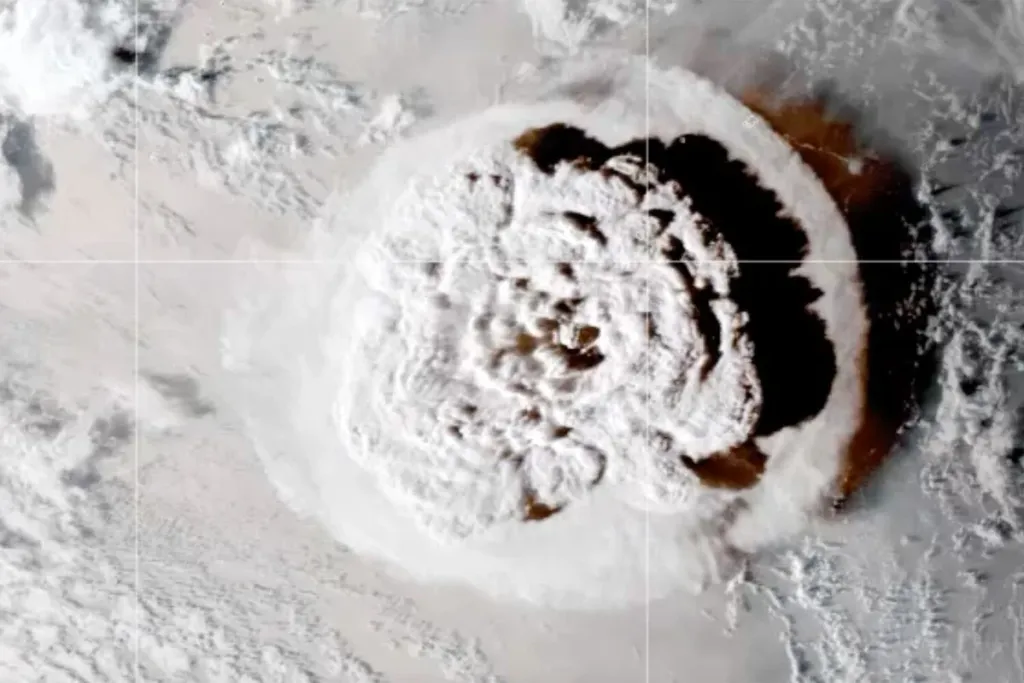The eruption of Tonga volcano triggered processes in the atmosphere that produced the strongest storm in recorded history. This has been reported by the American Geophysical Union. On January 15, 2022, the Hunga-Tonga-Hunga-Haapai volcano in the country of Tonga (Polynesia) erupted. This eruption was the most powerful in the 21st century, when a plume of ash reaching the stratosphere and rising to a height of 58 kilometers sprayed 146 teragrams (trillion grams) of water into the stratosphere. Atmospheric fluctuations caused by the explosion circled the Earth several times.
Alex Van Eaton, a volcanologist with the US Geological Survey, along with his colleagues analyzed data from Earth’s remote sensing satellites. According to scientists, a high-energy magma release crossed the shallow ocean, causing a violent storm. The molten rock evaporated seawater, which rose and eventually turned into a cloud of steam that caused exciting collisions between volcanic ash, supercooled water and eddies.
By summarizing data from sensors that record light and radio waves, scientists tracked lightning strikes and estimated their heights. It turned out that the explosion produced more than 192,000 flashes (consisting of almost 500,000 electrical pulses) with a maximum frequency of 2,615 flashes per minute. Some of these lightning bolts reached an unprecedented height of 20 kilometers to 30 kilometers in the Earth’s atmosphere.
“Not only were we attracted by the intensity of the storm. We were surprised by the volcano-centered concentric lightning rings that then expanded and contracted. We were stunned by the scale of these lightning rings. We’ve never seen anything like it before. Single lightning rings have been observed, but not multiple and much smaller.”– summarized the authors.













